How to get the most out of your whale-watching and northern lights tour?
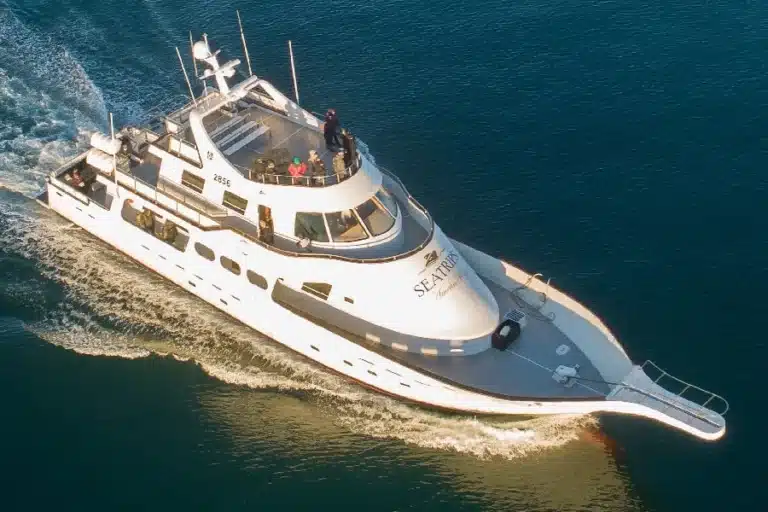
When coming to Iceland, most tourists plan on coming out to sea to find the array of beautiful nature that we have to offer; harbour porpoises, white-beaked dolphins, minke whales, and humpback whales, and in the evening, the northern lights! Of course, it can never be guaranteed what we see each tour, but our guides and the rest of the crew are dedicated to finding the marine mammals and aurora borealis. But how do you get the most out of your whale-watching or Northern Lights tour? The first tip is to make sure to book your tours early on in your stay, so that if there are cancellations due to the weather or you unfortunately do not see anything, you can reschedule for later on!
Whale-Watching Tours
It is important for our passengers to be as prepared as possible, so here are a few things that you should think about before joining us! Firstly, you don’t always need to pre-book your tickets… we often have enough space to book the tour the day before and this is important as we need to consider the weather. In order to go out for a tour, the company has to first look at the weather. If it is too windy or too wavy, the boat cannot go out. Of course, the weather has no real effect on whether we would see the animals, but our passenger’s safety comes first. You can contact us to find out the best time to go out before booking or check the weather on here (have a look at the wind and waves outside Reykjavík).
Once you’ve booked your tour, you’ll receive your ticket. It is important to read through this thoroughly, as this has all the information you’ll need to know before coming out. Once you’ve wrapped up warm, it is time to head down to the harbour to get ready to leave. Our check in system is inside our restaurant, the Old Harbour House. It is important for our guests to come here at least 30-minutes before the tour so that they can get their boarding pass. In here you will be directed to the correct boat so that you don’t get lost! You can even grab yourself a meal after the tour with some discount!
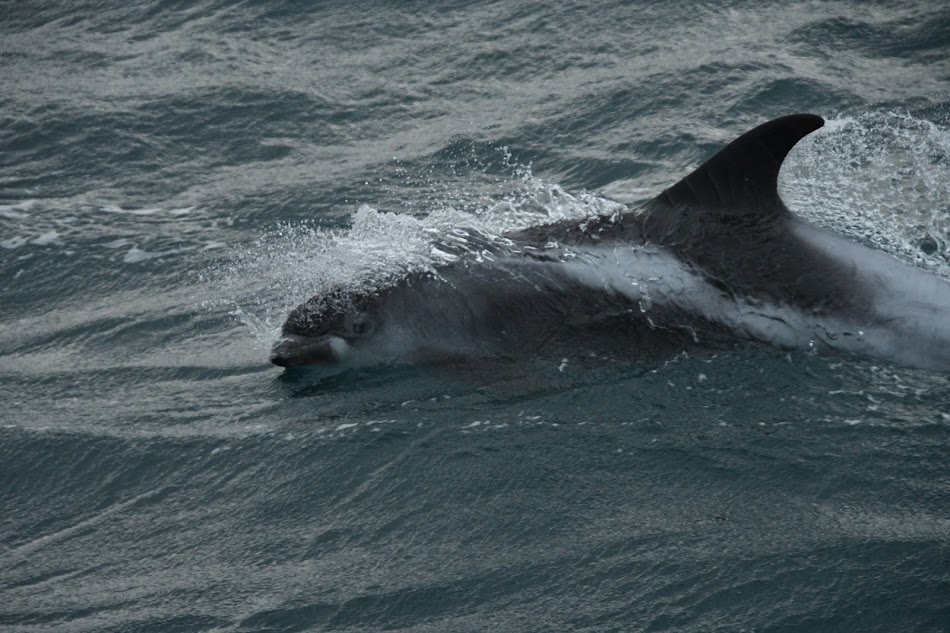
Once you’re out on the boat, we have a choice of inside and outside seating. There is a bar inside the boat where you can find yourself hot and cold drinks, alcoholic beverages and some snacks. The tour is three hours in total and we spend the first hour travelling out to the most active area of the bay. During this time, we are searching for the whales and dolphins. It may end being longer than an hour’s search but also could be less! Out at sea can be a little bit colder than it is on land so make sure you have your hats and gloves, and extra layers to put on! Once we find the animals, we will spend up to an hour with them, as well as having the possibility of searching for other marine life! The guide willalso be talking over the microphone during the sightings to make sure that the passengers know where to look, as well as giving more information about the species. It is important during this time that we follow our regulations to keep the animal safe. Many people expect the boats to get really close to the animals, however, it is up to the animal if they want to come close to us. When our time is up, we head back to the harbour! Again, this will take about an hour, so get yourself nice and comfy!
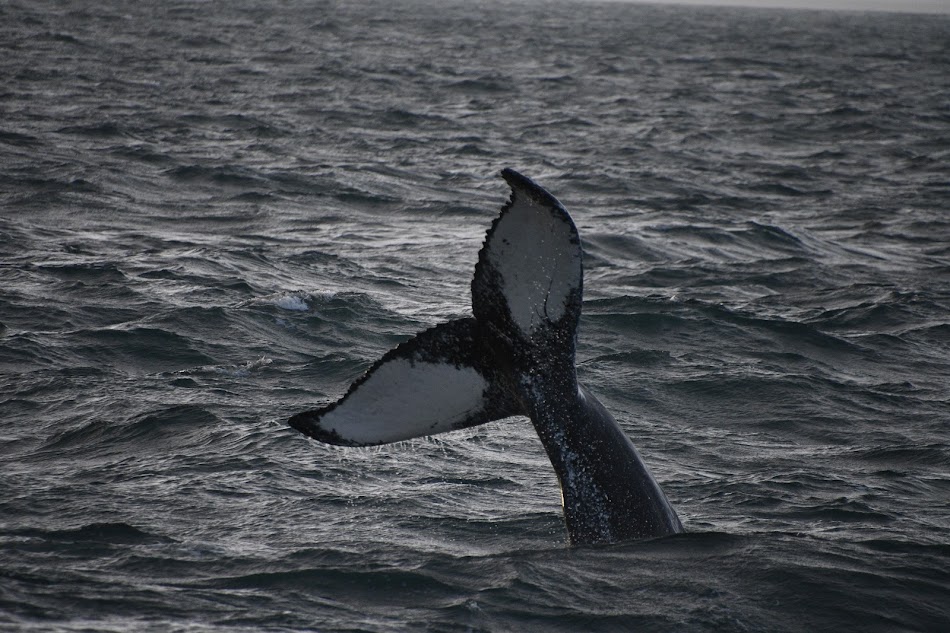
Although we see our whales and dolphins all-year round, there are peak seasons to consider too. Our humpback whales and minke whales are a migratory species. This means that they travel to Iceland during the summer months (May-October) to feed. We have been lucky enough the last few years to have several of these species stay during the winter, but remember, each year is different to the last. You can also read our blog or come into our office to find our what species have been seen recently! The ones that stay during the winter are theorised to be younger individuals that are not old enough to breed or older ones that cannot breed anymore. Our harbour porpoises and white-beaked dolphins are coastal species, therefore meaning that they are here all-year round. We’ve also been lucky to have occasional visits from killer whales and fin whales too! However, another thing to consider on when to book your flight to Iceland, is that if you choose the summer months for the whales, then you are sacrificing seeing the northern lights! This is because we have 24-hours of daylight during the peak summer months and in order to see the northern lights, we need it to be dark.
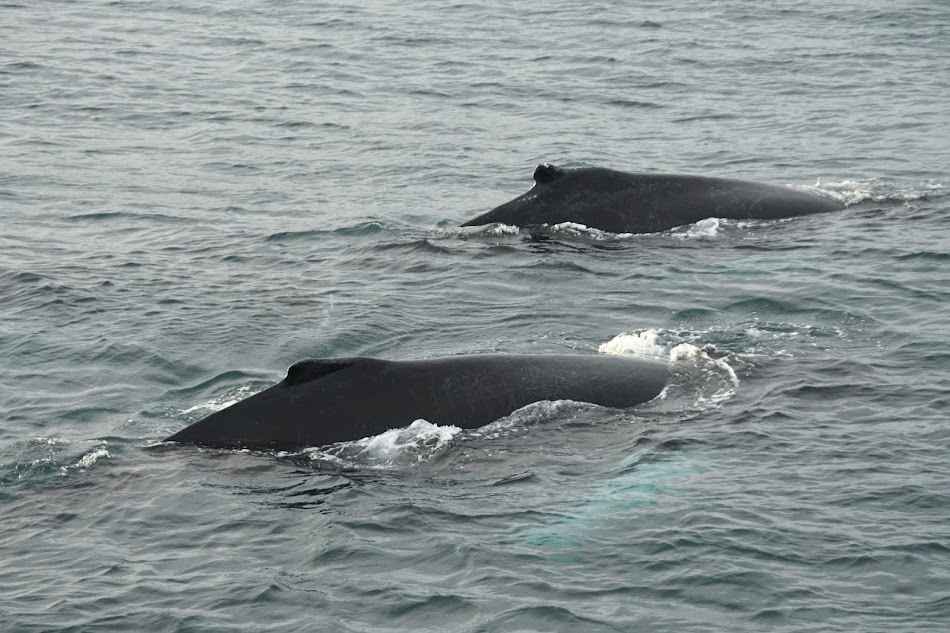
Northern Lights
Our northern lights tour are only two hours long in comparison to the whale-watching tours. We head out to the islands just outside Reykjavík, which is roughly about a 30-minute journey, to get away from the city lights as well as heading a little bit more north! Again, you can book these a day before, but this time, our crew are checking for the cloud cover instead to decide if it’s okay to go out. Our northern lights tours only go out if we think we have a good chance of finding the northern lights. We use Perlan to check the cloud coverage and the northern lights activity (KP index). The KP index is the strength of the geomagnetic activity and it ranges from 0-9. The higher values indicate more disturbances in the geomagnetic forces. However, anywhere between a KP value of 1-5 is normally good for Iceland, however, we have also seen them with a KP value of 6-8. Each night is different, and the KP value never guarantees that we will see the northern lights. Feel free to contact us again to check the best date for your tour! We can only check a few days beforehand, and the weather here likes to change quite a lot too, so bear that in mind!
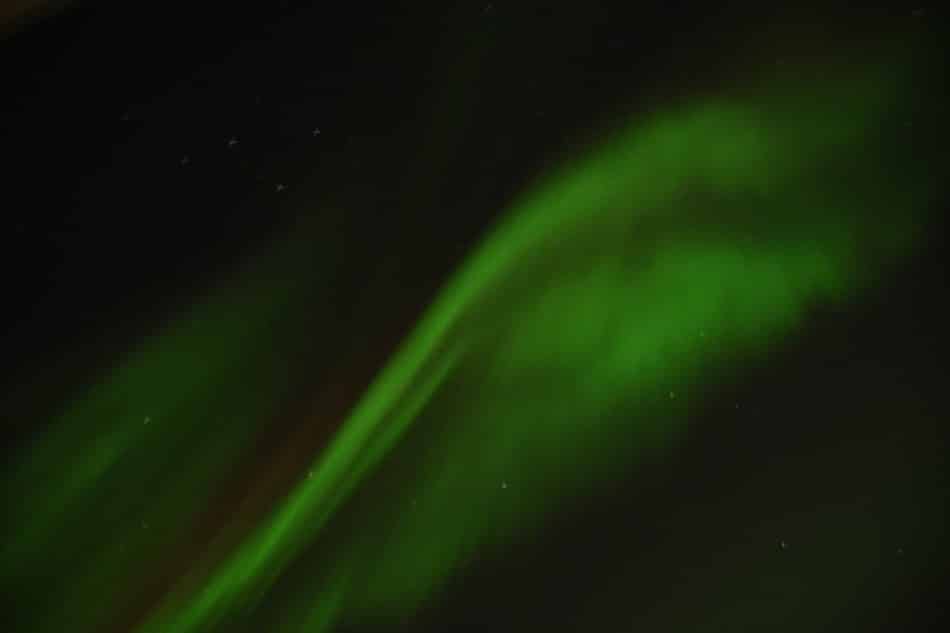
Just like our whale-watching tours, you’ll receive your ticket once the booking is completed. It is important to read through this thoroughly, as this has all the information you’ll need to know before coming out. You need to head down to the Old Harbour House again to check in. It is important for our guests to come here at least 30-minutes before the tour so that they can get their boarding pass. If you would prefer instead, head down an hour before the tour and grab yourself a hot dinner with us. We normally start boarding 15-30 minutes before the tour so that people can stay in the warmth for as long as possible, and again, will direct people to the correct boat.
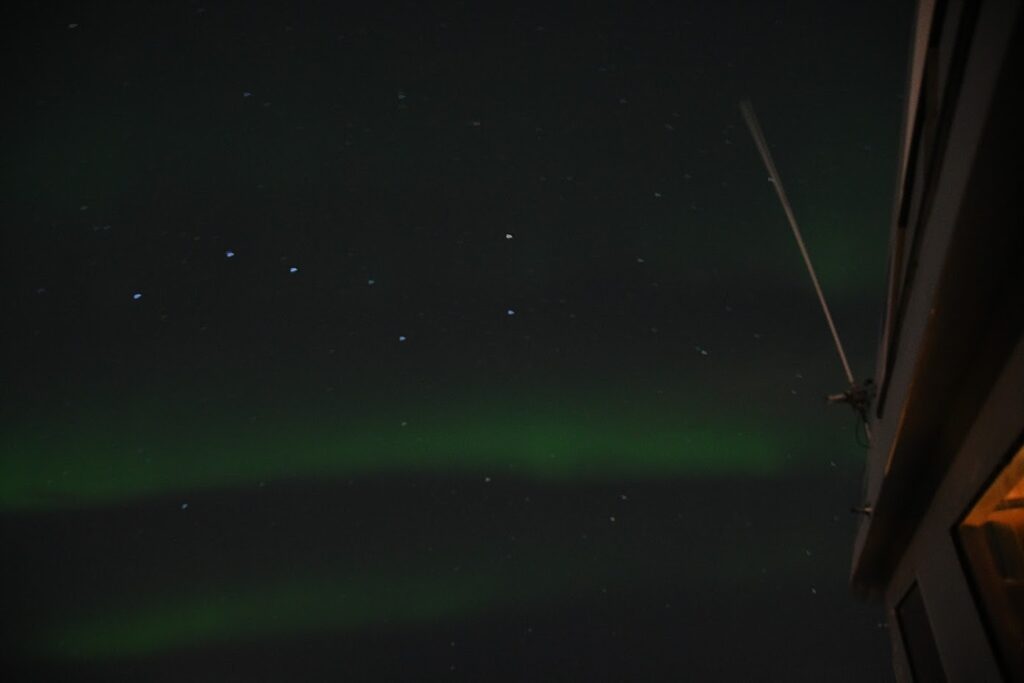
During the tour, the guide will announce that they will stay outside looking for the northern lights, allowing passengers to stay inside the boat, nice and cosy. If and when they see any northern lights, they will announce it over the microphone so that the passengers can come outside. They will also talk the passengers through setting up their cameras and phones so that they can take pictures too. You can screenshot these settings below to help prepare before the tour if you’d like as well:
- iPhone 11 models and up: open up your camera settings and turn on your night mode. Normally this turns on automatically as soon as you’re outside in the dark. But if not, it looks like this:

- You also want to make sure the flash is off (the button to the left of the night mode). You then want the night mode set to 3 seconds and once you take a photo, you have to stay as still as possible until it has finished taking the photo. Remember, the boat does move sometimes, so try to have a steady hand.
- Unfortunately, if you have a model under the iPhone 11, it won’t have the night mode setting. You can try downloading apps specifically for taking photos of the aurora, but they are not always the best.
- Android models: most android phones have a bit of fancier set up. Once you open your camera, you want to slide all the way to the right to find the MORE section:

- In here, you will find the PRO option (top left). You can then change the ISO and the shutter speed in here to take your pictures:


- You want the ISO set to as high as it can go, but 3200 is the best option. You then want the shutter speed set to somewhere between 1 and 4.
- If your android model doesn’t allow you to do this, you might be able to try the night mode as well (if your phone model has it).
- Remember, the boat does move sometimes, so try to have a steady hand and wait for the photo to finish taking before you move.
- Unfortunately, if your phone does not have these settings you can try downloading apps specifically for taking photos of the aurora, but keep in mind that they are not always the best.
- Camera models (i.e. Nikon and Canon): similarly to the android phones, you can change your ISO and shutter speed to the same settings (ISO: 3200 and shutter speed: 3 seconds). Feel free to play around with these two values. You then want to change your aperture to the lowest setting – anything lower than 4 is normally good enough! You can also try bringing your tripod if you have one or try leaning on something to be more stable as the boat can move slightly.
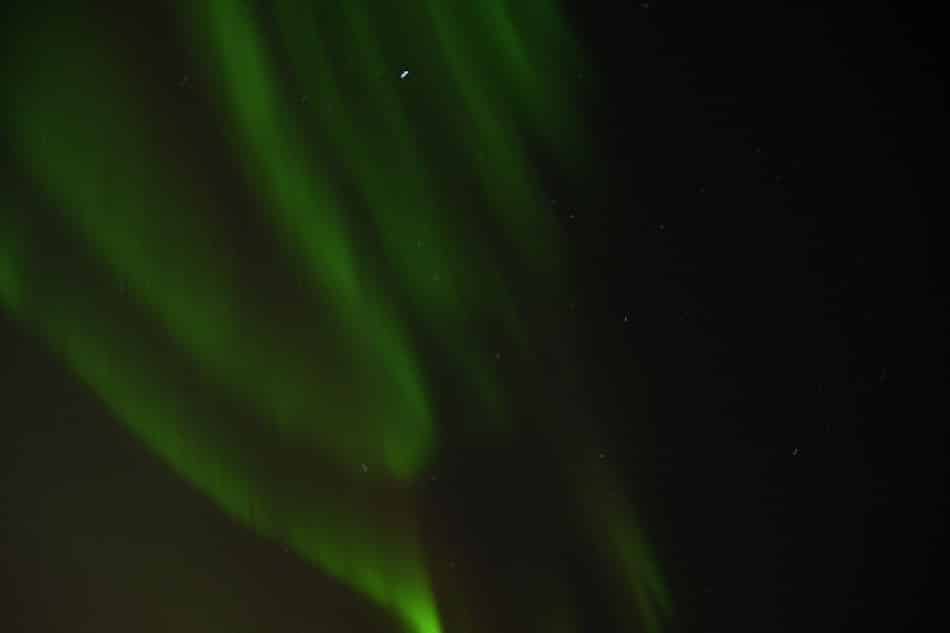
Now that your cameras are set up, its time to enjoy the northern lights (hopefully)!! A lot of people come to Iceland expecting the northern lights to look like the photos and videos that they see, however, this isn’t always the case. Photos will always look better than what we see with the naked eye (something you can learn about on the tour!). You can see the different ways the northern lights can look in the photos here and in our blogs! They have the ability to get stronger and weaker, and no aurora looks the same! Unfortunately, the crew don’t have the magic ability to turn them on with a switch, so you have to be very patient when waiting for them. Each tour is still beautiful and unique, and everyone that gets to see the northern lights are incredibly lucky!
At the end, to get the most out of your whale-watching or Northern Lights tour, you need to be prepared. Know that different seasons offer different experiences and that you need certain camera settings if you want to capture the northern lights.
We hope to see you soon on one of our tours! Hopefully you are a little bit more prepared to set sail with us at Sea Trips. If you have any concerns or questions, feel free to email us at Seatrips@Seatrips.is !
By Rebecca Roberts

